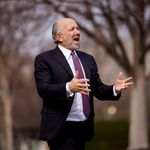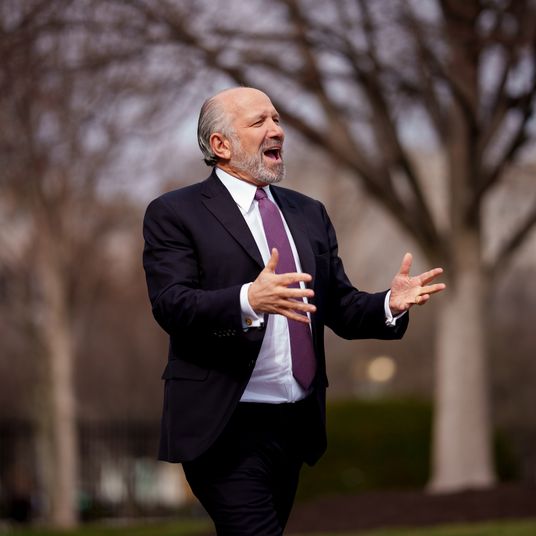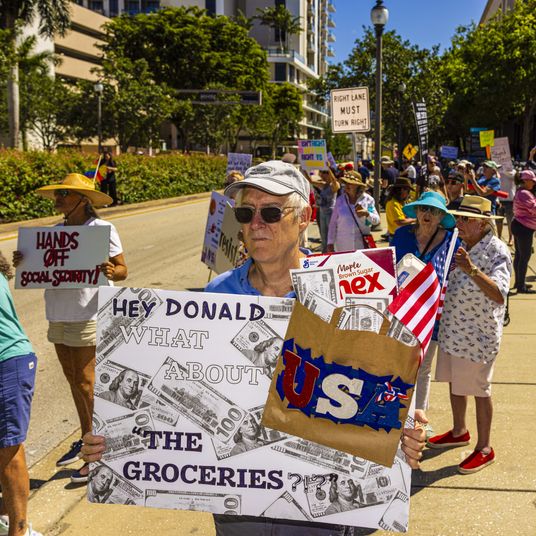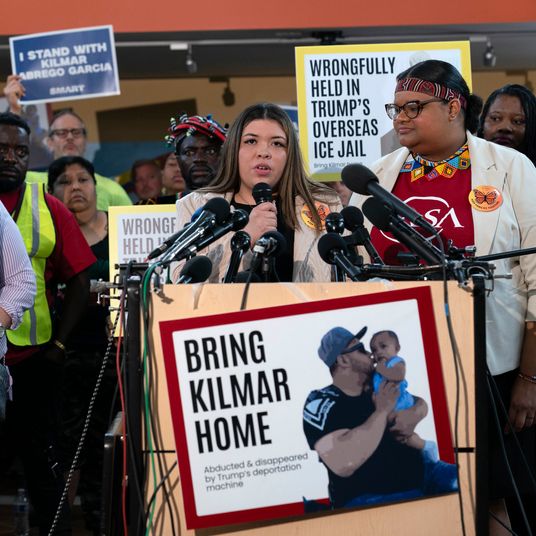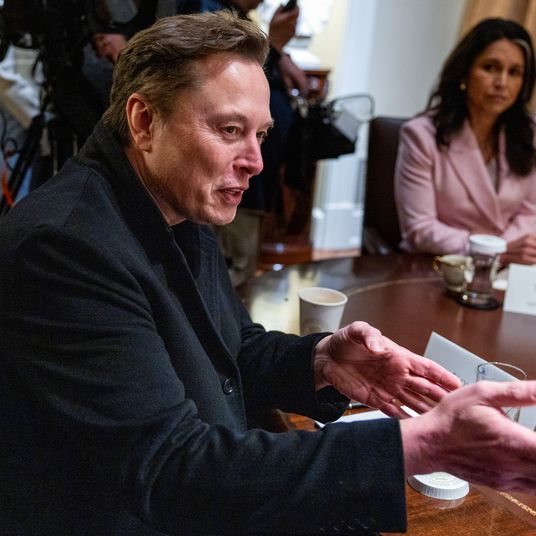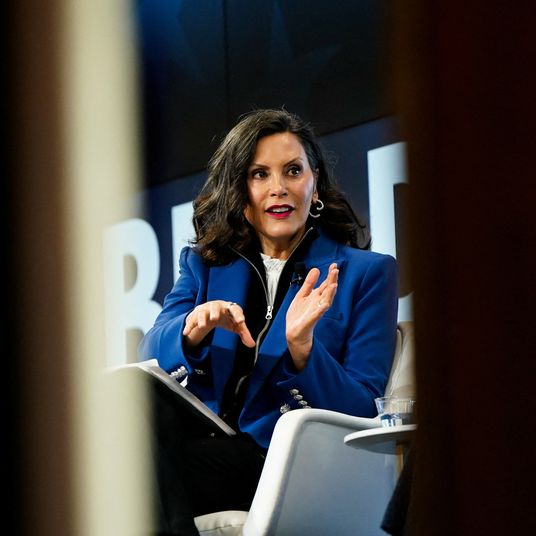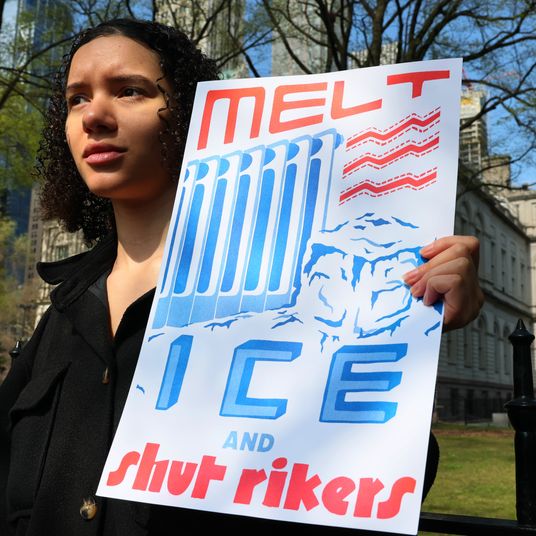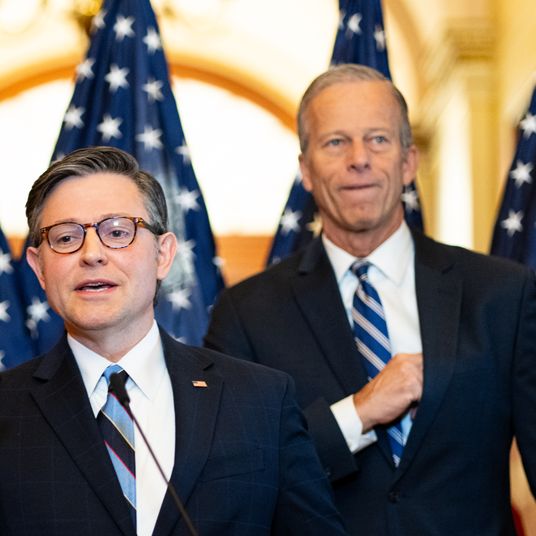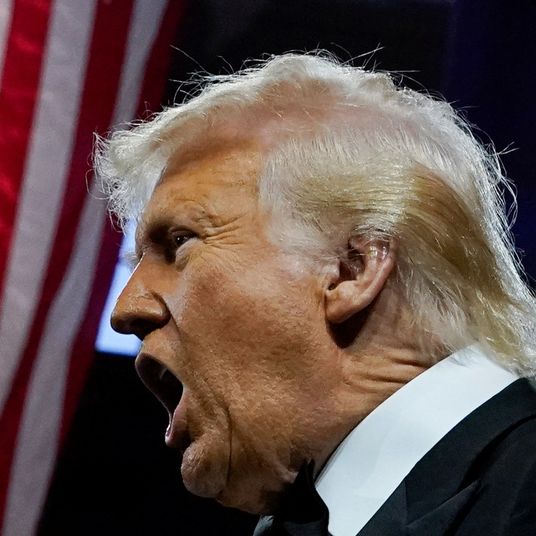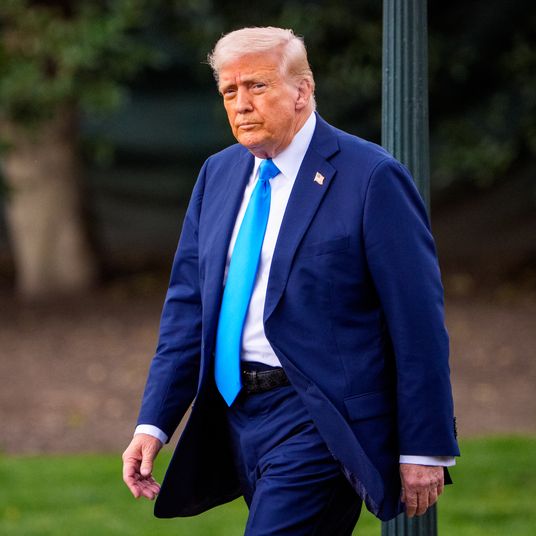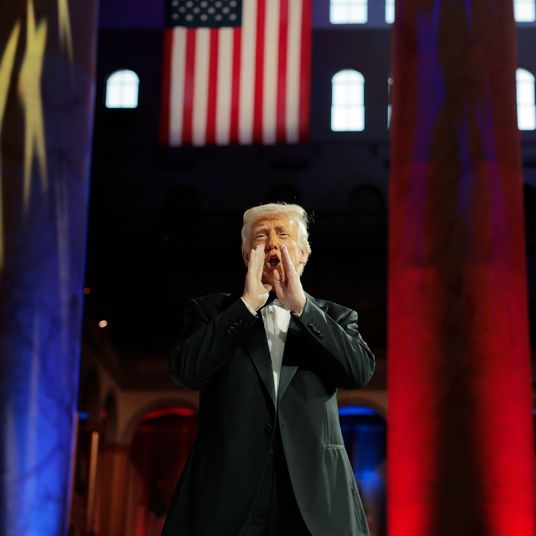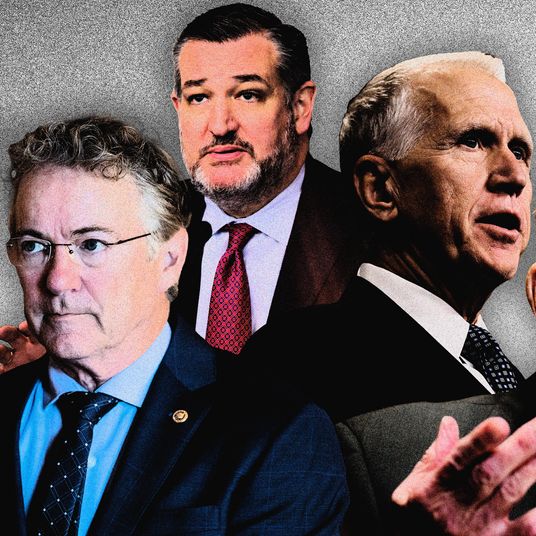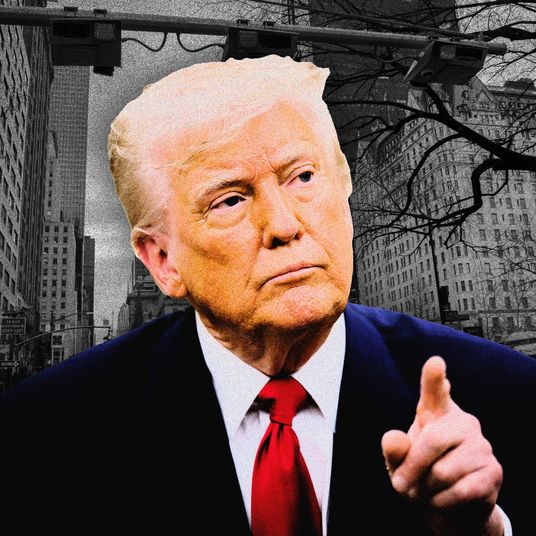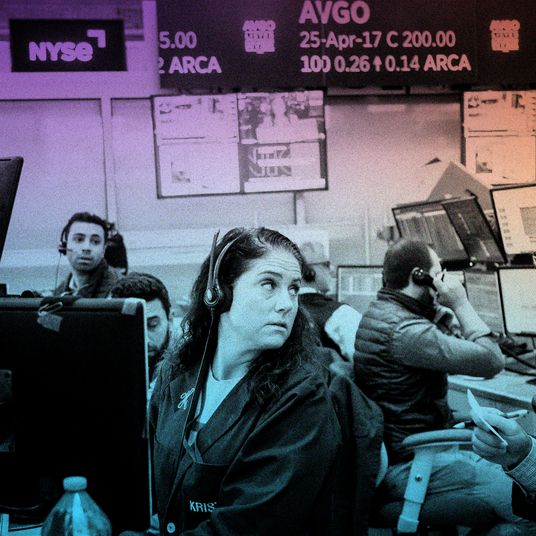
We live in an age of falling social trust. Americans’ confidence in their government, established institutions, and each other are all in long-term secular decline. The same basic trend holds for nations throughout the West.
This increase in alienation has not been distributed evenly. Generally speaking, college-educated urbanites espouse a higher degree of trust in government and credentialed experts than non-college-educated people, especially ones who live far from major metro areas. For this reason, resistance to vaccination and other public health directives is more common among working-class people than it is among urban professionals. And although a majority of North Americans of all social classes are vaccinated, vaccine mandates have inspired significant mobilizations among the minority of working people who interpret such requirements as a form of tyranny.
This is a convenient phenomenon for rightwingers who wish to portray conservatism as a populist creed.
If one wants to frame contemporary politics as a conflict between noble blue-collar workers and decadent liberal professionals – without endorsing new social welfare programs, the expansion of collective bargaining rights, or any other measure that would progressively redistribute material resources – then working-class agitation against vaccine mandates is ideal fodder for agit-prop. Thus, in recent days, Fox News has cast a Canadian labor dispute as the biggest story in the United States.
Mask and vaccine mandates enjoy strong majority support in Canada. But the nation’s right wing has long resented public health regulations for a mix of libertarian and/or paranoid reasons. In mid-January, that movement found a potent rallying point when Canada’s cross-border truckers lost their exemption from vaccine mandates. An outraged minority of these truckers joined with other anti-mandate activists in a “Freedom Convoy” that traversed all of Canada’s provinces before converging on the nation’s capital of Ottawa. There, thousands have camped out, threatening to continue disrupting traffic throughout the city — while their allies partially blockaded the Ambassador Bridge between Windsor, Ontario, and Detroit, Michigan — until the government suspends all COVID mandates.
Fox’s Tucker Carlson and Laura Ingraham have hailed these protesters as courageous dissidents who’ve struck fear into the hearts of “the regime media” that’s been trying to keep the working man down.
The cynicism and hypocrisy of Fox’s coverage — which celebrates anti-vaxxers’ attempts to override majority rule through economic extortion as an expression of democratic fervor less than two years after the network condemned Black Lives Matter protests as affronts to the rule of law — scarcely merits comment. Few willing to recognize the network’s bad faith remain unaware of it.
But rightwing agit-prop for the Freedom Convoy has found more respectable expression in other venues, including a much-read dispatch from Ottawa published on Bari Weiss’s blog.
After her departure from the New York Times in 2020, Weiss has dedicated herself to spotlighting the blind spots of a liberal media too cosseted by class privilege and cocooned in “woke” echo chambers to maintain its journalistic integrity. Weiss’s Substack, Common Sense, describes itself as a publication for “people who want to understand the world as it is, not the world as some wish it to be,” and “seek the truth rather than the comfort of a team or a tribe.”
And yet, to help her readers understand the Freedom Convoy “as it is,” Weiss chose to publish a tribute to the truckers’ protests that does more to flatter the tribal narratives of right-wing populists than to convey basic truths about the convoy.
The piece in question, “What the Truckers Want” by the conservative Canadian columnist Rupa Subramanya, has some virtues. Subramanya spoke with 100 protesters at the Ottawa encampment, and her interviews complicate some popular caricatures of Canada’s anti-vaxx movement. Although the convoy’s lead organizers include a motley crew of right-wing extremists, those drawn to the cause of ending COVID mandates are not united by a commitment to white supremacy or fascism or immigration restriction or misogyny; many simply wish to, well, end COVID mandates. As Subramanya emphasizes, among the protesters were no small number of non-white and immigrant Canadians. Her interviewees do not seem animated by hatred but merely by, in the first instance, a paranoid distrust of the COVID-19 vaccines, and in the second, an understandable sense of disenfranchisement at being barred from much of civil society for making (what they unreasonably see as) an entirely personal medical decision.
But Subramanya’s piece does not aim to merely convey the substance of protesters’ concerns. Rather, it seeks to cast the convoy as an authentic expression of Canada’s “have-nots,” who are finally standing up to its overweening Zoom class. To sell this narrative, Subramanya insists that the protests are about something “far bigger than vaccine mandates” — namely, the disempowerment of those left behind by the contemporary Canadian economy — without providing any evidence for this being the case. She then exaggerates the movement’s scale, provides the reader with no information about its degree of popular support, and declines to even gesture at the negative consequences that its ideology has had for the broader public.
The propagandistic character of Subramanya’s report can be gleaned from a close reading of a couple key passages. First, consider her thesis statement:
Ostensibly, the truckers are against a new rule mandating that, when they re-enter Canada from the United States, they have to be vaccinated. But that’s not really it. The mandate is a moot point: The Americans have a similar requirement, and, anyway, “the vast majority” of Canadian truckers, according to the Canadian Trucking Alliance, are vaccinated. (The CTA represents about 4,500 truckers nationwide.)
So it’s about something else. Or many things: a sense that things will never go back to normal, a sense that they are being ganged up on by the government, the media, Big Tech, Big Pharma.
The reasoning in that first paragraph is odd. Yes, the vast majority of Canadian truckers are vaccinated. But the vast majority of Canadian truckers are also not participating in the protests; indeed, their union has condemned the convoy. So why would the vaccination status of most truckers tell us anything about the true motivations of the fringe minority of anti-mandate protesters?
There is nevertheless a kernel of truth in Subramanya’s thesis: The protests are not really about ending the vaccine mandate for cross-border truckers but rather about ending all public health mandates and restrictions. Yet she buries this simple fact beneath a bunch of populist abstractions that only confuse the issue. The protesters she speaks with do not feel “ganged up on” by the powers that be in some generic sense. They are not complaining about excessively high drug prices or calling for higher taxes on tech CEOs or antitrust action against tech companies. Virtually every interviewee in the piece is an unvaccinated Canadian who joined the protests out of outrage over the social exclusion they’ve suffered in their capacity as vaccine resisters. Subramanya’s editorializing notwithstanding, her own reporting demonstrates that this isn’t about much more than vaccine mandates.
The reporter’s tendency to exaggerate the movement’s size and equate its supporters with the working class writ large takes more egregious form later in the piece. Subramanya writes:
The convoy is spearheaded by truckers, but its message of opposition to life under government control has brought onto the icy streets countless, once-voiceless people declaring that they are done being ignored. That the elites — the people who have Zoomed their way through the pandemic — had better start paying attention to the fentanyl overdoses, the suicides, the crime, the despair. Or else.
… The divide that already existed between the haves and have-nots largely mapped onto the new chasm between those who supported the mandates and those who did not.
In writing that the Freedom Convoy brought “countless” people to the streets, Subramanya subordinates journalistic imperatives to propagandistic ones. It is, of course, almost always impossible to get an exact headcount on participation in a mass protest. But approximations are not difficult to come by. And a reporter interested in giving their readers a clear and accurate sense of a protest’s scale would cite them instead of using a hyperbolic adjective: Canada’s anti-vax movement has not mobilized “countless” people on the streets of Ottawa, but rather, roughly 18,000 at the peak of the demonstrations on January 29. That is a significant mass mobilization. But it nevertheless pales in comparison to the crowds galvanized in major cities throughout North America by George Floyd’s murder in 2020. In that context, conservatives had little trouble recognizing that it is possible for a movement to simultaneously mobilize a large crowd and voice demands that lack popular legitimacy.
Subramanya’s repeated equation of the protestors with the “have nots” – and of supporters of public health regulations with white-collar “elites” – is similarly manipulative. Perhaps, this characterization accurately reflects the Freedom Convoy’s self-conception of the conflict over COVID mandates. But Subramanya’s piece endorses this viewpoint as correct: The divide over mandates “largely” maps onto the chasm between Canada’s “haves” and “have nots.” To make this claim, without once citing a single opinion poll, or any other index of popular support for the protests and their animating cause, is plainly misleading.
An Ipsos poll taken in late January found that 67 percent of Canadians wanted “the government to impose further measures on the unvaccinated population.” A separate survey conducted around the same time found that 60 percent of Canadians endorsed a fine on the unvaccinated. At the end of January, a poll from the Angus Reid Institute did find majority support for the statement: “It’s time to end restrictions and let people self-isolate if they’re at risk.” But this is inconsistent with most other available data. The COVID-19 monitor, a public opinion study that boasts an extraordinary 100,000 respondents, found 70 percent of Canadians supported vaccine mandates for all non-exempt adults and majority support for requiring proof of vaccination to enter most public indoor venues.
Suffice to say, 70 percent of Canadians are not remote-working elites. In fact, the truckers who make up the core of the protest movement are almost certainly less exposed to the risk of COVID infection in their capacity as laborers than is the typical Canadian worker. The truckers have at times made this point themselves in an effort to justify their exemption from COVID mandates. Yet this fact also means that they are not the workers who have the most to lose from mass vaccine resistance. In other words, these unvaccinated truckers are a class of laborers who are relatively insulated from the threat of infection and who nevertheless demand the right to increase the health risks faced by heavily exposed grocery-store clerks, retail salespeople, and other service-sector workers. (It is true that the Omicron variant has greatly lessened vaccines’ capacities to reduce transmission, but the vaccinated are nevertheless less likely to spread COVID than the unvaccinated.)
Meanwhile, a recent poll of Ottawa residents found that 67 percent opposed the Freedom Convoy. And that was before the movement forced a slowdown in car production by blocking traffic between Windsor and Detroit.
Subramanya suggests that the “haves” who support COVID mandates are willfully blind to Canada’s growing wealth gap, along with “the fentanyl overdoses, the suicides, the crime, the despair” that have come to plague working-class life. Given the actual content of the protestors’s demands, however, this litany of afflictions is mostly a non-sequitur. During the peak of pandemic restrictions and lockdowns, Canada’s suicide rate fell substantially. The opioid epidemic long predates COVID-19. And the notion that the contemporary wealth gap is principally a product of the disparate impact of pandemic restrictions – or excessive “government control” – is ludicrous. If Subramanya’s interviewees erroneously attribute these problems to public health regulations, it is perfectly legitimate for her to report as much. But to relay such misconceptions without offering any insight as to their accuracy is to perform the work of a stenographer, not of a journalist. Alas, amplifying the paranoid suspicions of the protesters without bothering to ascertain their veracity seems to be Subramanya’s standard operating procedure. The columnist tweeted to her 128,000 followers last Sunday, “I’ve heard from so many today that some Ottawa hotels have been instructed by the city/feds not to give out rooms to the protestors. The Marriott downtown apparently is empty but evidently all the rooms booked. Someone should really investigate if this is true” – a claim that received much pickup before a more diligent reporter determined that it was false.
Given Subramanya’s political sympathies as a columnist, it seems reasonable to suspect that her invocations of inequality and working-class dispossession are meant to lend a cause that doesn’t threaten the material power of conservative elites (resistance to vaccine mandates) the moral authority of ones that do (income and wealth redistribution).
In truth, it is obscene to portray the supporters of vaccine mandates as being uniquely indifferent to the downtrodden’s despair. Canadian truckers with a perverse phobia of vaccination are genuinely suffering from the burdens of social exclusion. But the hundreds of thousands of North Americans who have needlessly lost an unvaccinated loved one to anti-vaxx ideology are suffering from a far worse deprivation. And this great mass of mourners is far from an elite constituency. One of the many relevant facts that Subramanya chooses to elide in her piece is that, contrary to her interviewees’ claims, vaccines work. They do not work perfectly. But they do make those who accept them 97 times less likely to die from a COVID infection. For this reason, Omicron deaths have been disproportionately concentrated in underprivileged areas with low rates of vaccination. In other words, the Zoom class’s proponents of vaccine mandates are less callously indifferent to the well-being of the unvaccinated than the latter are to their own well-being and to that of all who love them.
It is important to understand anti-vaxxers’ concerns and to avoid caricaturing their movement. And it is reasonable to argue that Canada’s exceptionally strict vaccine passport system is doing more to undermine social peace than advance public health. But it is journalistically bankrupt to portray a small, wildly unpopular movement for repealing public health regulations as a mobilization of “countless” have-nots against social inequality. Reporters who do so tell their readers far less about the “world as it is” than about the world as right-wing populists wish it to be.


